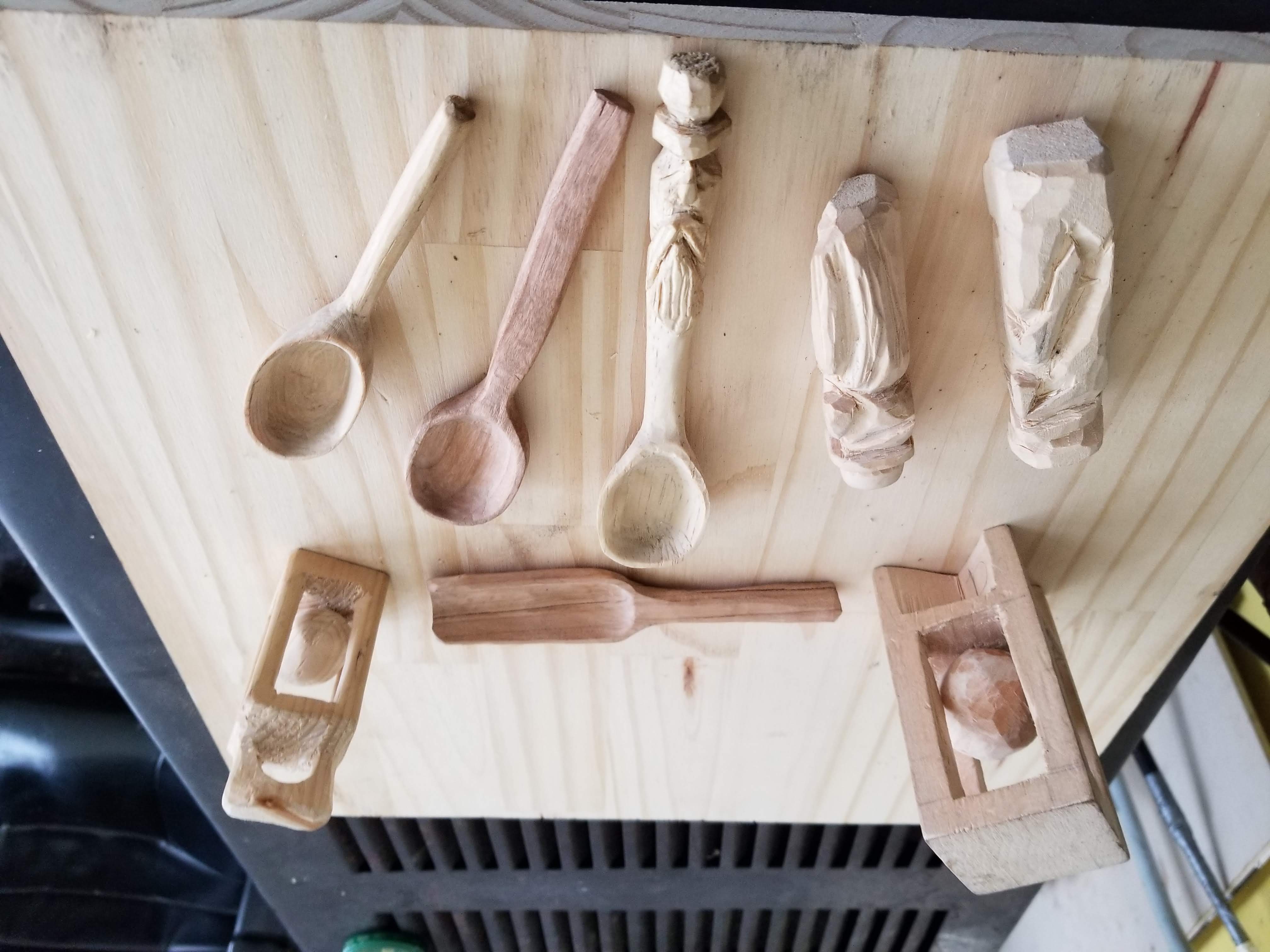Unlocking the mysteries hidden within a simple block of wood, whittling is an age-old craft that invites us to slow down, tune into our artistic instincts, and reconnect with the raw essence of nature. Whether you’re a beginner stepping into the world of whittling for the first time or someone seeking a new creative outlet, this article will serve as your trusted guide on how to embark upon this enchanting journey. From selecting the right tools to mastering foundational techniques, we will unveil the secrets that will help you unleash your inner woodcarver. So, grab a sharp blade, embrace the rustic charm of wood grains, and delve into the captivating realm of whittling. Let us carve our way into this extraordinary craft, together.

Choosing the Right Materials: An Exploration of Essential Whittling Tools and Wood Selection

Essential Whittling Tools
- Whittling knife – a sharp, pointed blade ideal for cutting and carving
- Detail knife – a smaller version of the whittling knife for intricate designs
- Cutting glove - to protect your hand while working
- Sharpening stone – to keep your knives in optimal condition
- Carpenter’s pencil – for sketching designs on the wood
Wood Selection
- Basswood – a softwood perfect for beginners due to its ease of carving
- Butternut – slightly harder than basswood, known for its beautiful grain patterns
- Walnut – a hardwood that offers durability and an elegant finish
- Cherry – prized for its rich color and ability to hold fine details
- Pine – commonly used for practice pieces, easy to find and inexpensive
Choosing the right tools and wood for your whittling projects is paramount to the success of your creations. Whether you are a seasoned whittler or just starting out, having the essential tools such as a whittling knife, detail knife, cutting glove, sharpening stone, and carpenter’s pencil will ensure you have everything you need to bring your designs to life. Additionally, selecting the right wood for your projects is crucial. Basswood, butternut, walnut, cherry, and pine offer a range of options in terms of hardness, grain patterns, and aesthetics. Experiment with different materials to discover your favorite combinations and unleash your creativity!
Mastering the Basics: Step-by-Step Guide to Getting Started with Whittling Techniques

Selecting the Right Knife:
- Choose a sharp, high-quality whittling knife that feels comfortable in your hand.
- Ensure the blade is suited for carving and has a sturdy handle for control.
- Consider the type of wood you plan to work with and the blade’s durability.
Preparing Your Workspace:
- Find a well-lit and ventilated area with a sturdy table or workbench.
- Lay down a protective surface to catch wood shavings and prevent damage.
- Gather essential tools such as sandpaper, carving gloves, and a carving vice if available.
Basic Whittling Strokes:
- Practice the push stroke, pull stroke, and stop cut to achieve different carving effects.
- Start with simple, straight cuts to build confidence and get accustomed to the knife’s feel.
- Experiment with varying the depth and angle of your cuts to create texture and dimension.
Safety First:
- Always wear protective gloves and eye goggles while whittling to prevent accidents.
- Keep your fingers and hands away from the blade’s path to avoid potential injuries.
- Work patiently and with care, focusing on maintaining control and precision.
Final Thoughts
In conclusion, embarking on the journey of whittling can be a delightful and fulfilling experience. By following the steps outlined in this guide, you have equipped yourself with the fundamental knowledge and skills necessary to begin your whittling adventure. Remember, the journey is just as important as the destination, so take your time and enjoy the process of transforming a simple piece of wood into a work of art.
Whether you decide to whittle for relaxation, creativity, or simply to learn a new skill, the meditative and therapeutic nature of this craft is unmatched. Allow yourself to immerse in the rhythm of the carving and let your imagination run wild as you breathe life into the wood with each stroke of the knife.
Remember, practice makes perfect. Don’t be discouraged by initial setbacks or imperfections. Whittling is an art form that requires patience, dedication, and a willingness to persevere. With time and practice, your skills will undoubtedly improve, and your creations will become more intricate and breathtaking.
As you embark on this whittling journey, be sure to explore different techniques and styles, experiment with various wood types, and seek inspiration from others in the whittling community. By sharing your creations, attending workshops, or participating in whittling events, you can foster connections with fellow enthusiasts and continue to learn and grow as a whittler.
So, gather your tools, select the perfect piece of wood, and let your imagination take flight. Unleash your creativity and discover the joy of whittling. Who knows, you may find yourself captivated by the ancient art form and become one of the great artisans of our time.
Remember, every masterpiece begins with a simple block of wood. It’s your turn to shape it into something extraordinary.
